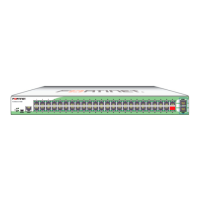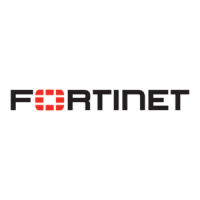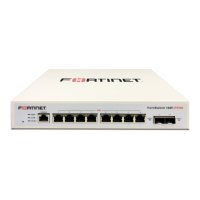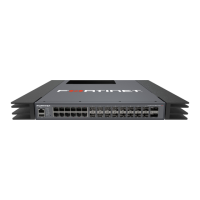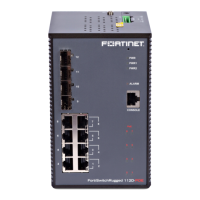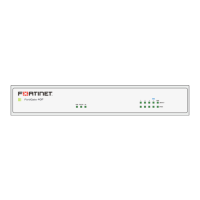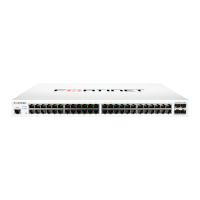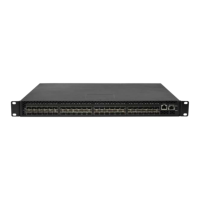
Do you have a question about the Fortinet FortiSwitch-548B v. 5.2.0.2 and is the answer not in the manual?
Guides the user through the initial power-on and login process for the FortiSwitch-548B.
Details connecting a terminal or PC to the RS-232 DCE console port for initial configuration.
Provides steps for logging into the managed switch using a Web browser.
Provides commands for displaying system information such as ARP cache, calendar, CPU process, event logs, and configuration.
Details commands for configuring device interfaces, including status, counters, and speed/duplex settings.
Explains commands for configuring and viewing Spanning Tree settings, including MST, port modes, and BPDU handling.
Provides commands for managing user accounts, including showing users, authentication, and password settings.
Details commands for configuring security features like dot1x, RADIUS, TACACS+, port security, and CDP.
Explains commands for managing the ARP cache, including showing ARP entries and configuring proxy ARP.
Covers commands for configuring IP routing, including interface settings, static routes, and default routes.
Details commands for configuring and monitoring OSPF, including areas, interfaces, neighbors, and database.
Covers commands for configuring RIP, including admin mode, split horizon, and redistribution.
Covers commands for configuring VRRP, including virtual routers, IP addresses, modes, and tracking.
Details IGMP commands, including showing system-wide info, groups, interface details, and membership.
Covers commands for configuring IPv6 routing, including brief status, interface details, route tables, and preferences.
Explains commands for configuring OSPFv3, including areas, interfaces, neighbors, and route redistribution.
Covers switching-related configurations like DHCP Snooping, VLANs, port security, MAC-based VLANs, and port-channel.
Details routing configurations including ARP table, IP interfaces, OSPF, RIP, router discovery, and VLAN routing.
Covers security configurations such as 802.1x, RADIUS, TACACS+, IP filter, secure HTTP, and secure shell.
